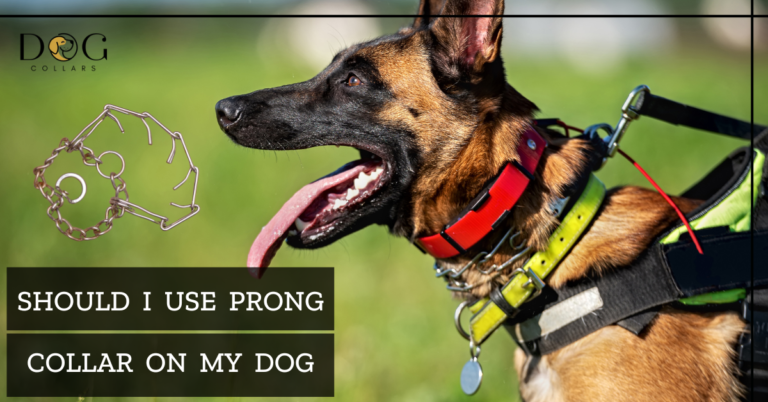Which is better flea collar or drops for dogs

Is your furry friend struggling with fleas and ticks? Discover the pros and cons of flea collars and drops to find out which one is the best fit for your dog’s lifestyle and health.
Stop fleas and ticks in their tracks with the right flea treatment for your furry friend. We’ll break down the pros and cons of flea collars and drops to help you make an informed decision.
When it comes to protecting our furry friends from pesky fleas and ticks, pet parents often find themselves overwhelmed with choices. One of the most common debates is which is better flea collars or drops for dogs. Both options have their own advantages and disadvantages that can make choosing between them a tricky decision.
In this blog post, we’ll take a closer look at the pros and cons of each option and provide expert insights to help you make an informed choice for your pup’s flea treatment needs. So let’s dive in!
Which is better flea collar or drops for dogs – Pros and Cons
Hey there, as a dog owner, I understand the struggle of dealing with fleas and ticks on our furry friends. There are many options available to combat these pesky parasites. Including pest collars and drops. Here are some pros and cons of each option:
Pros and cons of flea collars
Flea collars for dogs have been available on the market for decades as a popular flea treatment option. They are designed to prevent ticks, but they come with their own set of pros and cons.
Pros:
Using a flea collar for dogs has several pros that make it a popular choice among pet owners.
- Long-lasting protection:
It can protect your dog against fleas and ticks for several months, depending on the type of collar you choose.
- Easy to use:
Collars are simple to put on and require no extra steps.
- Safe for dogs:
Most flea collars are safe for dogs, as long as they are used correctly and don’t cause an allergic reaction.
Cons:
However, there are some downsides associated with using a pest collar for dogs.
- Chemicals:
These contain chemicals that may cause irritation or allergic reactions in some dogs, especially those with sensitive skin.
- Odor:
Some flea collars may have a strong odor, which can be unpleasant for both you and your dog.
- Limited effectiveness:
These may not be effective for all dogs, especially those with severe flea infestations.
- Flea Collar Residue and Home Cleaning Considerations
Collar residue can transfer onto clothing and furniture during playtime. This can make it challenging to prevent mites from infesting your home. Regular vacuuming and cleaning routines after outdoor playtime are essential to minimize the risk of infestation.
Pros and cons of flea drops
Flea drops for dogs are a popular choice among pet parents to prevent flea and tick infestations. They consist of a liquid solution that is applied topically on the dog’s skin, usually between the shoulder blades or at the base of the neck.
Pros:
- Highly effective:
Flea drops are often more effective than flea collars at getting rid of fleas and ticks. It is easy to apply and usually provides long-lasting protection. Depending on the type of product, some can last up to 30 days, which means fewer applications and less hassle for pet owners.
- Can treat other parasites:
Some flea prevention drops can also treat other parasites, such as heartworms or ear mites.
- Easy to apply:
Flea drops are easy to apply and usually require only one or two drops on the skin between the dog’s shoulder blades.
Cons:
However, there are also some cons associated with using flea control drops.
One major disadvantage is that they can be messy and leave a residue on your dog’s fur.
- Potential side effects:
Some dogs may experience side effects from pest drops, such as skin irritation, vomiting, or diarrhea.
- Shorter protection:
Flea tonic usually provide protection for only a month, so you need to apply them more frequently than collars.
- More expensive:
These drops are generally more expensive than pest collars, especially if you need to use them every month.
(Note: It’s important always to follow the instructions carefully when applying any kind of flea medication or treatment to your pet’s skin. Overdosing can cause harm as much as underdosing may fail in providing adequate prevention against pest infestation.)
Consider your dog’s lifestyle before choosing an anti-flea treatment. If your dog swims, most anti-flea shampoos wash off easily, while spot-on treatments work effectively when wet but require more frequent applications than Seresto Collars. These collars are widely recommended by vets for their effectiveness against fleas and ticks, along with heartworm and worm treatments. Choose the best treatment that suits your dog’s needs.
Comparison between flea collars and drops for dogs
When it comes to flea and tick prevention for your canine friend, there are two main options: Pest collars and drops. Both methods have their pros and cons, so it’s important to weigh them carefully before making a decision.
Let’s compare these two options to help you make the best choice for your dog.
| Category | Flea Collars | Flea Drops |
| Protection | Long-lasting protection (several months) | Effective at getting rid of fleas and ticks |
| Ease of use | Simple to put on, no extra steps | Easy to apply, usually require only one or two drops |
| Chemicals | May cause irritation or allergic reactions in some dogs | Some dogs may experience side effects, such as skin irritation |
| Odor | Some may have a strong odor | Have pleasent scent or no scent at all |
| Effectiveness | May not be effective for all dogs, especially severe infestations | More effective at getting rid of fleas and ticks |
| Price | Generally less expensive than flea drops | More expensive, especially if used monthly |
| Protection Time | Long-lasting protection (several months) | Protection for only a month |
Keep in mind that this is just a general comparison, and the best option for your dog will depend on various factors. Always consult with experts before choosing any anti-flea treatment for your furry friend.
Expert recommendations and insights
When it comes to choosing between flea and tick collars and drops for your dog, seeking expert recommendations and insights can be helpful in making an informed decision. Experts suggest that the choice depends on various factors such as the age, breed, weight of your pup, existing infestations, lifestyle, and other health conditions.
According to veterinary dermatologists and pet care experts. These are more effective against tick infestations while spot-on treatments or drops work better with fleas. They also suggest that pet parents should consult their physicians before using any flea treatment on their pups due to possible allergies or reactions.
Experts recommend selecting a flea collar or drop product based on its active ingredient rather than brand name alone. The right active ingredient can help prevent fleas from reproducing thus reducing the overall population in your home. Additionally, they advise monitoring dogs closely for side effects after administering any kind of treatment.
Experts emphasize that preventive measures like keeping dogs clean with regular bathing using appropriate shampoo and grooming tools can help reduce mite attack which often accompanies fleas. Overall regular parasite control measures including heartworm prevention medication are necessary for maintaining optimal health in dogs.
Topical Flea & Tick Treatment for Dogs
One of the most popular methods for preventing and treating flea and tick infestations in dogs is through topical treatments. Topical treatments are applied directly to the dog’s skin, usually between the shoulder blades, and can provide protection against fleas and ticks for several weeks.
There are many different types of topical flea medications available on the market today, each with its own active ingredient. Some common ingredients include fipronil, imidacloprid, and permethrin. It’s important to consult with your veterinarian before choosing a specific medication to ensure that it is safe for your pup.
Topical treatments typically come in small tubes or vials that make application quick and easy. Many pet parents prefer this method over other forms of flea control because they don’t have to worry about their dog ingesting any pills or collars.
While topical treatments are generally very effective at killing fleas and ticks, they may not be suitable for every dog. Dogs with sensitive skin may experience irritation or allergic reactions from the medication. Additionally, some breeds may be more susceptible to certain types of parasites than others.
Topical flea medications are a great option for pet parents looking for an easy-to-use preventative solution against fleas and ticks. However, it’s always best to work closely with your veterinarian to determine which treatment option is right for you and your furry friend.
The case against flea collars
The use of flea collars has been a topic of controversy in recent years. With some experts and pet owners raising concerns about their safety and effectiveness.
One of the main arguments against pest collars is the potential for harmful chemicals to be absorbed into the dog’s skin or ingested through licking. Some bug collars contain chemicals such as tetrachlorvinphos and propoxur. Which have been linked to health concerns in both pets and humans. These chemicals can cause skin irritation, seizures, and other adverse reactions.
Another issue with flea collars is their effectiveness. While some flea collars may provide long-lasting protection. They may not be effective for all dogs, especially those with severe flea attack. Additionally, some pet owners may not be aware that collars need to be replaced regularly. Which can reduce their effectiveness over time.
There are also concerns about the environmental impact of parasite collars. The chemicals in collars can be harmful to wildlife and may contaminate the soil and water.
Overall, the case against flea collars highlights the importance of careful consideration. When choosing an anti-flea treatment for your pet. It’s essential to weigh the pros and cons and consult with a veterinarian to determine the best option for your furry friend.
Additionally, regular flea and tick prevention is crucial for your dog’s health and comfort, so make sure to stay on top of it.
Conclusions:
Flea collars and drops are both effective methods of keeping fleas away from your dog. But it’s important to weigh up the pros and cons for each before deciding. Pest collars have long-lasting effects and may be more practical for pet owners who don’t want to worry about reapplying medicine every month. While drops can provide a higher concentration of the active ingredient directly on your pup’s skin at any given time. Whichever way you decide to go with flea control for your furry friend. Protecting them from these unwanted pests is always top priority!
FAQs:
What is the most effective dog flea treatment?
The most effective dog pest treatment depends on various factors such as the severity of the infestation, the dog’s age and weight, and the owner’s preferences. Some popular options include oral medications, topical treatments, and flea collars. Consult with a veterinarian to determine the best course of action for your dog.
Can you use flea drops and pest collar at the same time?
It’s generally not recommended to use pest drops and a flea collar at the same time on your pet. The chemicals from each product could potentially interact and cause adverse reactions or even toxicity. It’s best to consult with your veterinarian to determine the best course of action for flea prevention and treatment.
Which is better pest collar or frontline?
Honestly, I’ve tried both and I gotta say, for my furry friend, Frontline worked better. The pesky little critters just kept crawling and biting despite the collar. But, everyone’s pet is different, so it’s worth giving both a try to see which one works best.
Do flea drops work for pests?
Okay, let me tell you something; pest drops really do work for those pesky pests. Trust me, I’ve tried everything under the sun to get rid of those little suckers, and the only thing that really did the trick was those magical drops. So yeah, if you’re dealing with some flea problems, give ’em a shot.
Why are flea drops so expensive?
Flea drops can be expensive due to the development of new, innovative and effective chemicals. These products go through extensive testing and research before they are approved for sale, leading to higher costs.
Additionally, the marketing and packaging of these products can increase their overall price. However, investing in quality flea tonic can save you time and money in the long run by preventing flea infestations and potential health issues for your pets.
Why do dogs hate flea drops?
Dogs may hate flea drops due to their strong odor, which can be unpleasant to their sensitive sense of smell. The feeling of liquid being applied to their fur can also be uncomfortable and may cause mild skin irritation. In addition, the taste of the drops can be bitter, causing dogs to try and lick it off. Which can be harmful if ingested in large quantities.
What attracts fleas to dogs?
Fleas are attracted to dogs because of their warm-blooded bodies, which provide a hospitable environment for the parasites. Additionally, dogs offer plenty of hiding places for fleas to lay their eggs and multiply. Fleas also feed on the blood of their host, making dogs a prime target for these persistent pests. Regular flea prevention measures are essential in preventing infestations.






